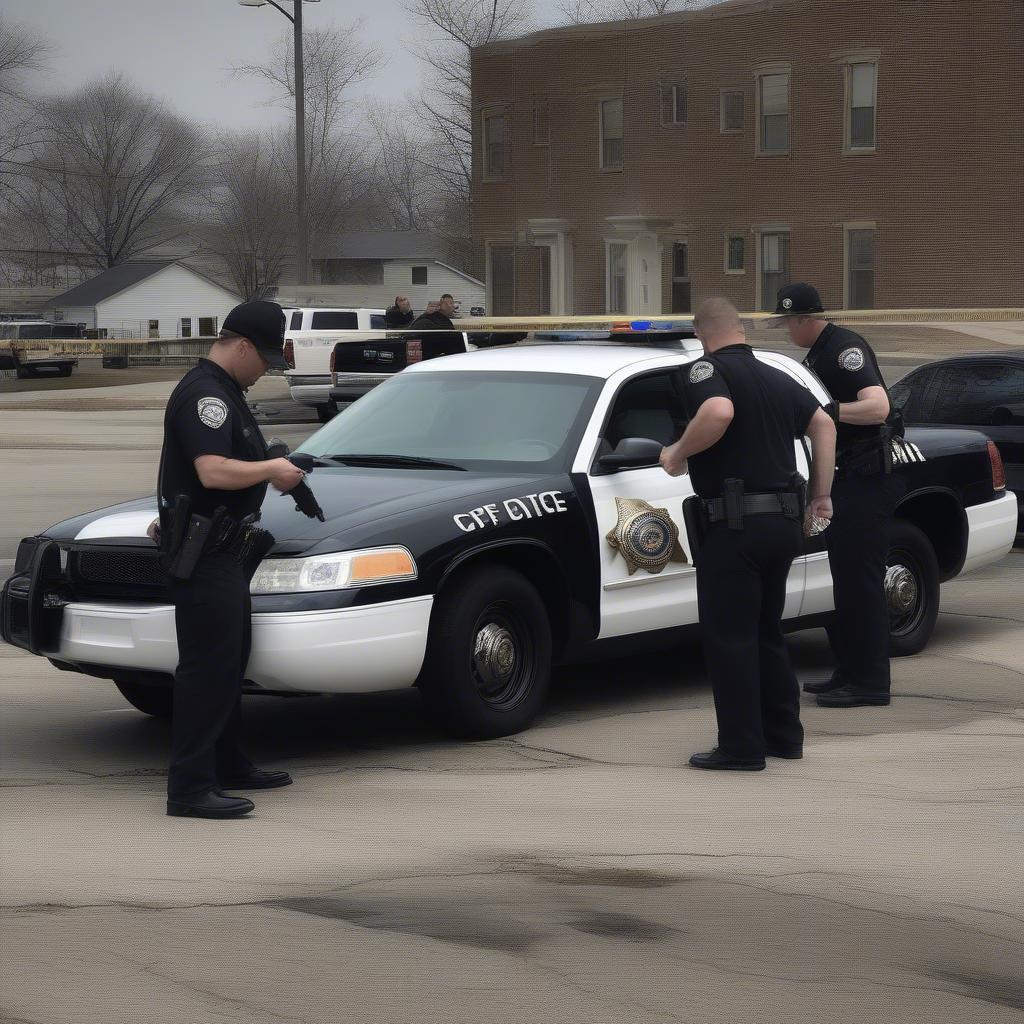The question “Who Killed Pablo Escobar” remains a source of fascination and debate decades after the infamous drug lord’s demise. While the official narrative points to a shootout with Colombian authorities on December 2, 1993, numerous theories and conflicting accounts continue to fuel speculation surrounding the circumstances of his death. This article delves into the complex web of events leading up to Escobar’s death, examining the key players involved and exploring the enduring mystery that shrouds his final moments.
Table Content:
- The Rise and Fall of Pablo Escobar: A Reign of Terror
- The Search for Escobar: A Collaborative Effort
- The Final Showdown: Conflicting Accounts and Unanswered Questions
- Los Pepes: A Shadowy Force in the War on Escobar
- The Aftermath: Escobar’s Legacy and the Ongoing Search for Truth
- The Role of U.S. Intervention: A Complex and Controversial Issue
- Conclusion: Unraveling the Enigma of Escobar’s Demise
- FAQ: Frequently Asked Questions About Pablo Escobar’s Death
The Rise and Fall of Pablo Escobar: A Reign of Terror
Pablo Escobar’s rise to power as the head of the Medellín Cartel marked a period of unprecedented violence and drug trafficking in Colombia. His vast wealth and ruthless tactics allowed him to control a significant portion of the global cocaine trade, leaving a trail of bloodshed and corruption in his wake. The Colombian government, under immense pressure from the United States, launched a relentless campaign to capture or kill Escobar. This led to a bloody war between the cartel and the authorities, resulting in countless casualties and a climate of fear that gripped the nation.
The Search for Escobar: A Collaborative Effort
The hunt for Pablo Escobar involved a complex network of organizations, including the Colombian National Police (CNP), special operations units known as the Search Bloc, and U.S. agencies like the DEA and CIA. Intelligence gathering, surveillance, and informants played crucial roles in tracking Escobar’s movements. The Search Bloc, trained by U.S. special forces, employed aggressive tactics to close in on the drug lord, often engaging in fierce firefights with cartel members.
The Final Showdown: Conflicting Accounts and Unanswered Questions
The official version of events states that Escobar was cornered on a Medellín rooftop and killed in a shootout with the Search Bloc. However, inconsistencies and alternative theories have cast doubt on this narrative. Some believe that Escobar, facing capture and potential extradition to the United States, took his own life. Others suggest that Los Pepes, a vigilante group composed of Escobar’s enemies, played a more significant role in his death than officially acknowledged. The involvement of U.S. intelligence agencies has also been subject to scrutiny, with questions raised about their potential role in the operation.
 Pablo Escobar's death scene in Medellin
Pablo Escobar's death scene in Medellin
Los Pepes: A Shadowy Force in the War on Escobar
Los Pepes (Perseguidos por Pablo Escobar), or “People Persecuted by Pablo Escobar,” emerged as a powerful and ruthless force in the fight against the Medellín Cartel. This paramilitary group, funded by rival drug traffickers and allegedly supported by elements within Colombian security forces, targeted Escobar’s associates and infrastructure. Their brutal methods, including assassinations and bombings, significantly weakened the cartel and contributed to the pressure on Escobar.
The Aftermath: Escobar’s Legacy and the Ongoing Search for Truth
Pablo Escobar’s death marked the end of an era in Colombia’s history, but the legacy of violence and corruption he left behind continues to resonate. The search for truth regarding his death remains an open wound for many Colombians. While the official narrative persists, the unanswered questions and conflicting accounts fuel ongoing investigations and documentaries, ensuring that the mystery surrounding “who killed Pablo Escobar” endures.
 Los Pepes vigilante group in Colombia
Los Pepes vigilante group in Colombia
The Role of U.S. Intervention: A Complex and Controversial Issue
The United States played a significant role in the war against drug trafficking in Colombia, providing financial aid, military training, and intelligence support to Colombian authorities. The extent of U.S. involvement in Escobar’s death remains a subject of debate. Some argue that U.S. agencies played a covert role in supporting Los Pepes, while others maintain that their involvement was limited to intelligence sharing and logistical support.
Conclusion: Unraveling the Enigma of Escobar’s Demise
The question of who killed Pablo Escobar continues to captivate and intrigue. While the official story points to a shootout with Colombian authorities, the numerous inconsistencies and conflicting accounts surrounding his death leave room for doubt. The complex interplay of actors involved, including the Colombian government, Los Pepes, and U.S. agencies, further complicates the narrative. Ultimately, the true circumstances of Escobar’s death may remain shrouded in mystery, serving as a reminder of the complex and often violent history of the drug war in Colombia.
FAQ: Frequently Asked Questions About Pablo Escobar’s Death
- Who officially killed Pablo Escobar? The Colombian National Police’s Search Bloc.
- When did Pablo Escobar die? December 2, 1993.
- Where did Pablo Escobar die? On a rooftop in Medellín, Colombia.
- What is Los Pepes? A vigilante group that targeted Pablo Escobar and his cartel.
- Why is there controversy surrounding Escobar’s death? Conflicting accounts and unanswered questions raise doubts about the official narrative.
- Did the U.S. play a role in Escobar’s death? The extent of U.S. involvement remains a subject of debate.
- What is the legacy of Pablo Escobar? A complex legacy of violence, drug trafficking, and social impact in Colombia.
